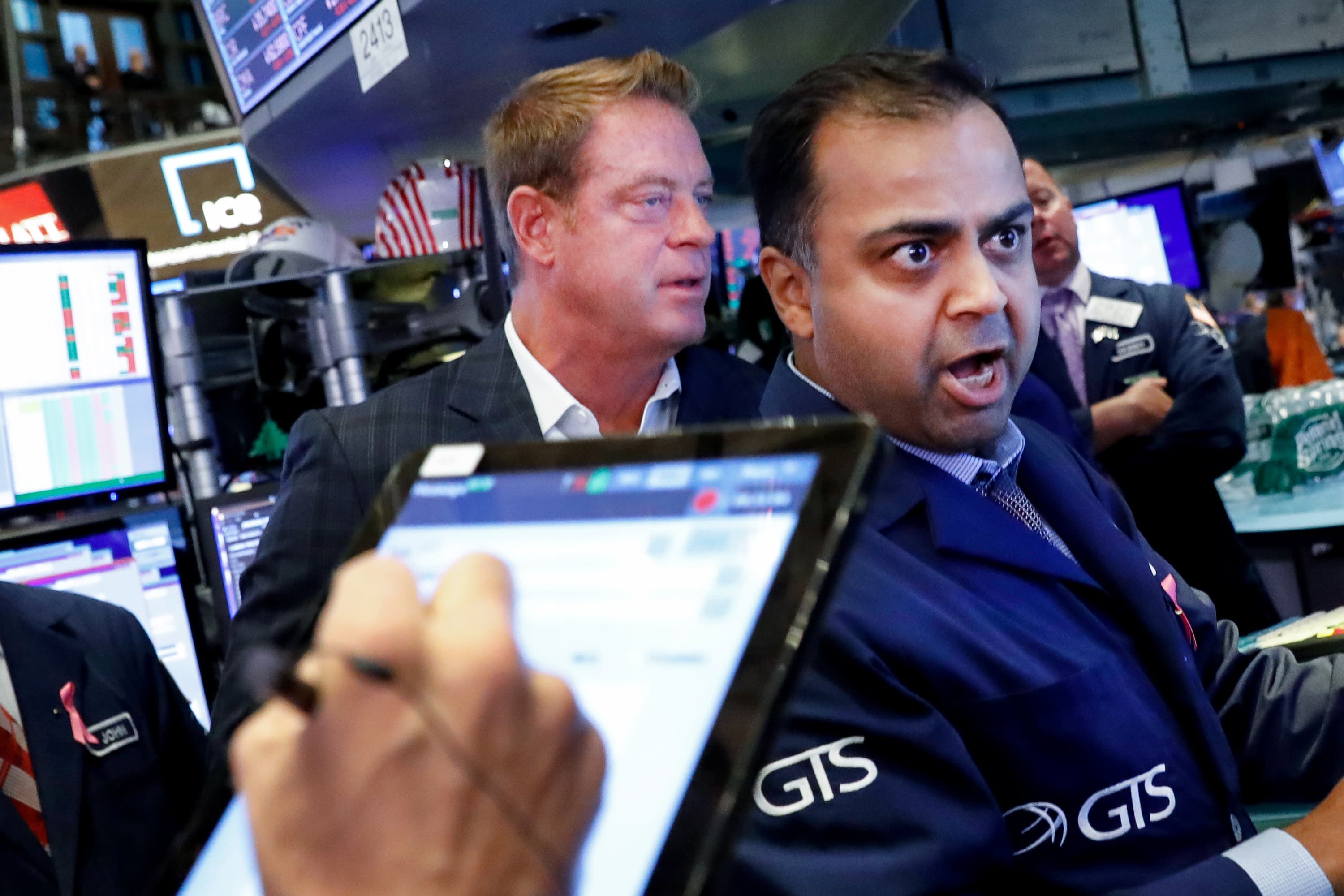It was one of the stranger market moves of the year in an already strange week.
After dropping more than 30 points on a disappointing September Non-Manufacturing ISM, the S&P bottomed 10 minutes later and rallied back to 2881, reversing almost all of the losses, and then went positive later in the morning.
What happened? “Volume was intense on the initial selloff, but then the selling pressure stopped” and the market lifted, one trader on a large sell-side desk (who insisted on anonymity) told me.
It may not be completely satisfying, but that is the likely explanation for the rally.
“The market was way oversold,” Alec Young, Managing Director, Global Markets Research at FTSE Russell, told me.
He has a point: Industrials, which has born much of the brunt of the selloff, was down 6% for the week at one point.
Growth sectors like Technology led the late-morning rally.
It makes some sense. For weeks, traders seem to have been positioned bearish, convinced weak manufacturing data would bleed into the consumer.
But the significant market drop this week — 1,000 points in the Dow Industrials — may have gone a bit too far, at least for the moment.
Stocks are now oversold and the risk to the market tomorrow — when the all-important September jobs report is release — may be to the upside.
Bears, of course, are hopeful that number will be well below expectations (currently expecting a gain of 145,000 jobs).
Another factor in the rally: more rate cuts.
“Market probabilities of a rate cut at the October meeting is 85% to 90%, and about 50% for the following meeting, and most of that increase is due to the weak corporate data,” Guy LeBas, Chief Fixed Income Strategist at Janney, told me.
Where does this leave us? “The market is definitely pricing in a weaker growth outlook,” Young told me, but it’s not at all clear that this will translate into a recession. Instead, he says, the more likely scenario is just weaker growth: “I think the market is pricing in 1.5% GDP growth for 2020. The bar is definitely lower for bulls. All they need to show now is that we are not going into a recession, and the market will stabilize.”
Ultimately, trade is the key. “The only good news is trade and tariffs started this, and that is what can halt this,” Young told me. “The ISM surveys showed that tariffs are the main issue. If you get good news on trade, this can turn around.”

